xtrchessreal
New Member
My 1000W HPS bulb burned out while arcing and melting the bottom of the bulb seal and melted the socket insert of the 5kV 600VAC 2000W pulse rated E 39 ceramic lamp holder as it was hanging horizontal. Luckily it burned to an open circuit and stopped the current at that point. The ceramic also cracked at multiple places, when I took it apart a couple pieces fell off and the HOT lead was burned open and completely disconnected from the socket. You can see inside the bulb through two completely opened holes at the male end of the bulb.
To me it is clear the bulb went into catastrophic failure, end of life I guess. But is this what is supposed to happen at end of life of 1000w HPS? I estimate near 5000 hours a bit over a year at 12/12 of actual life this bulb got though it was rated at 20,000 I think. Not a digital ballast either FYI.
Any similar experiences from HPS users would be nice to hear thanks
I've done research and found that one possible solution was due to an over-arc - but I need more research to determine what that means in terms of physical science and the events that led to it - it is supposed to be rare.
Also, I received my new sockets but they are not pulse rated properly. I was sold LH200 which is pulse rated properly but they sent me Leviton 8756 which is pulse rated at 4kV which according to both Leviton, a base mfr, and Osram, a bulb mfr, data specs for a 1000w HPS needs 5kV. If you need replacement sockets for a 1000w bulb look for Leviton 8746 which is pulse rated for 5kV 600VAC 1500w. I called the place I purchase from and they agreed their information was wrong on the site and refunded my money and I do not need to send these back. I do have several 400w MH magnetic lamps so extra supplies and a refund is cool.
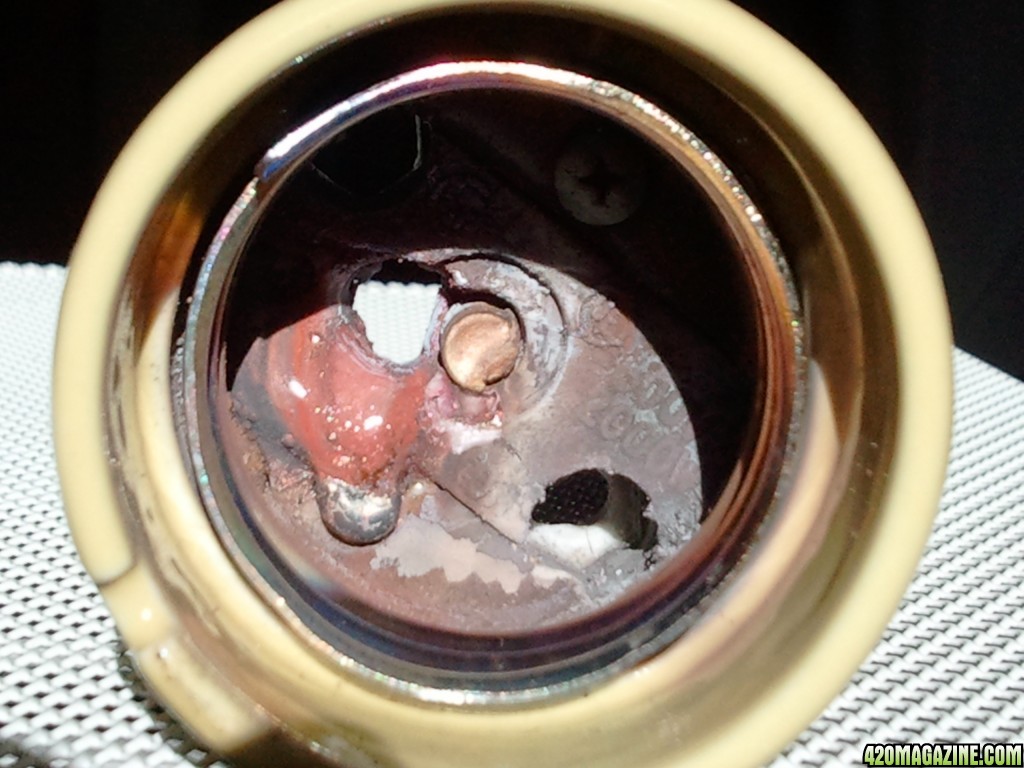
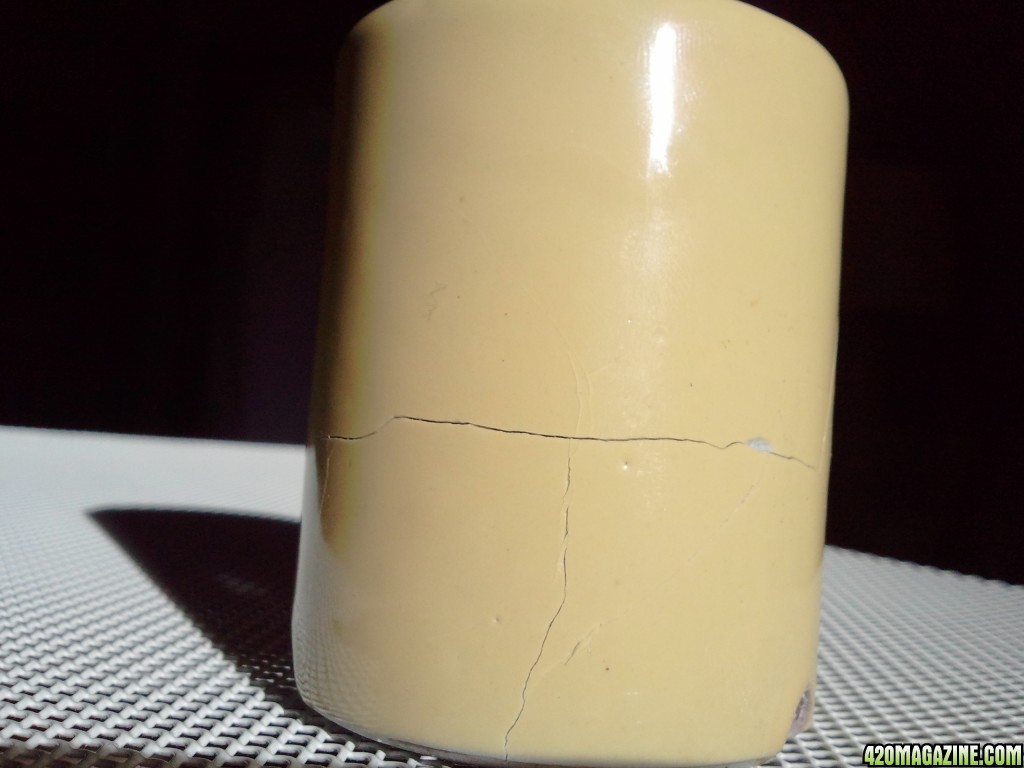
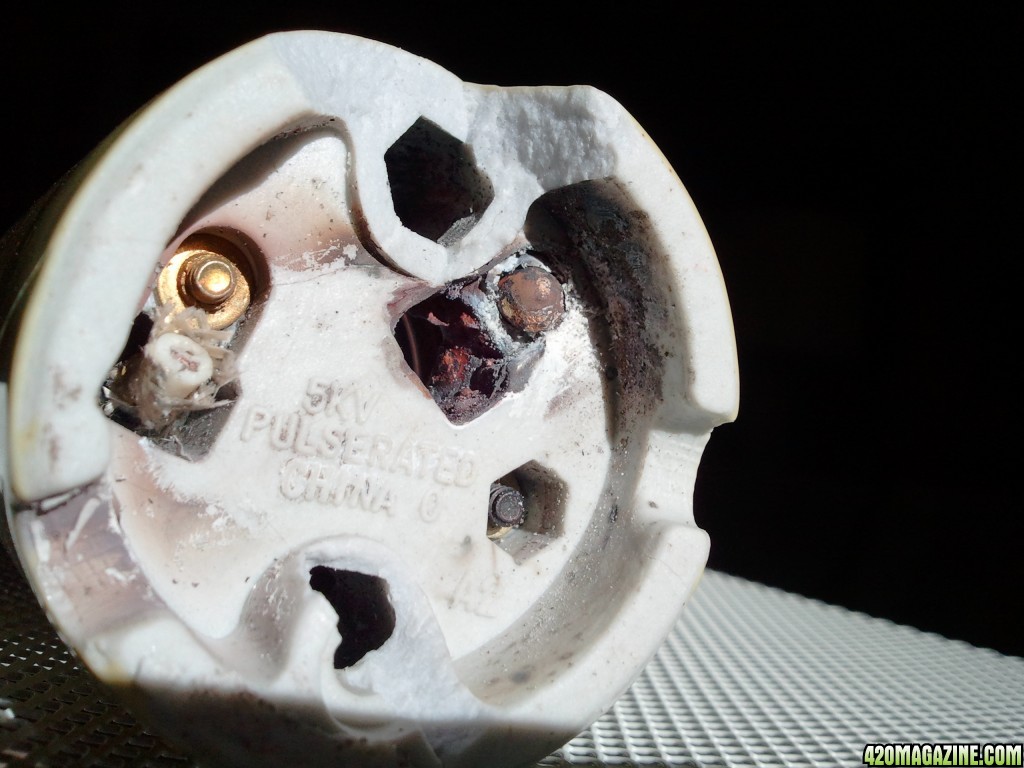
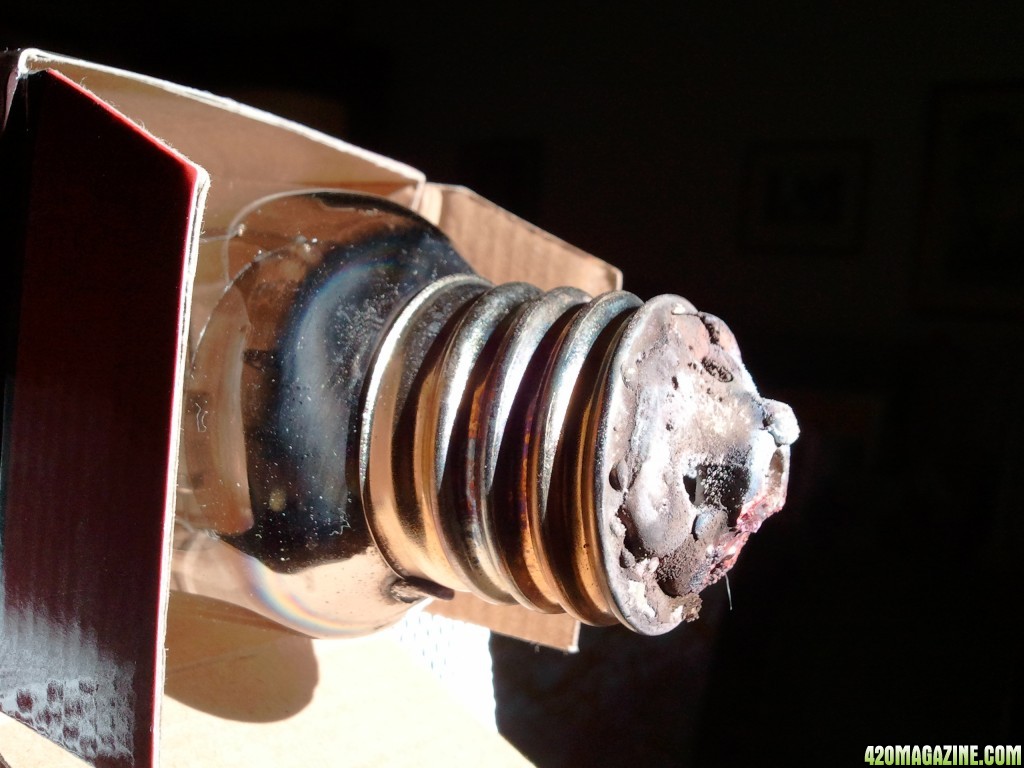
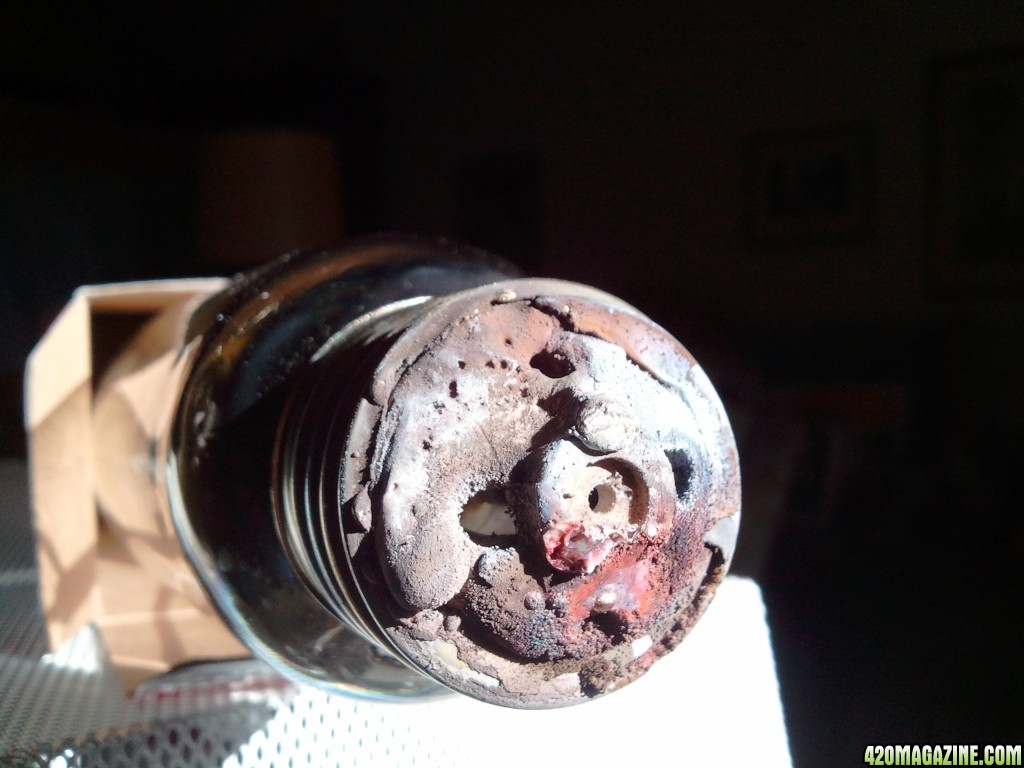
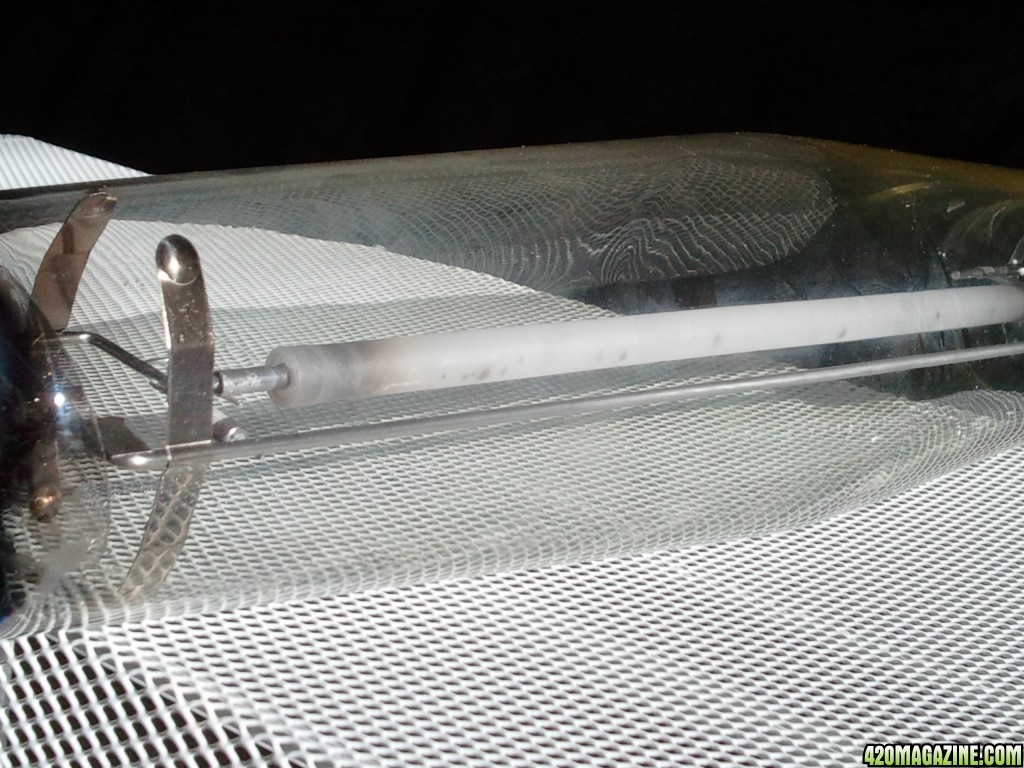
I don't know if you can make it out but the socket was pulse rated for 5kV 600VAC and 2000W. There appears to be some red-ish sealant material melted in the socket, the socket is cracked - I assume from the pressure and heat created during the failure. You can also see where I clipped the neutral wire but the black was burned to an open circuit. The Bottom of the bulb is malformed and the same red-ish sealant material is on it. You can see light through the hole in the base and yet the alumina ceramic arc tube is intact and no signs of a sodium leak.
Anyone know what the electrical rating is of the Hydrofarm CSPOM6KV? After my last purchase I want to know the ratings. There are a bunch of sockets being sold without the full ratings listed. Someone is going to get killed via fire and no one will be blamed or found guilty. And, marijuana haters will use it as another reason it is a dangerous drug.

To me it is clear the bulb went into catastrophic failure, end of life I guess. But is this what is supposed to happen at end of life of 1000w HPS? I estimate near 5000 hours a bit over a year at 12/12 of actual life this bulb got though it was rated at 20,000 I think. Not a digital ballast either FYI.
Any similar experiences from HPS users would be nice to hear thanks

I've done research and found that one possible solution was due to an over-arc - but I need more research to determine what that means in terms of physical science and the events that led to it - it is supposed to be rare.
Also, I received my new sockets but they are not pulse rated properly. I was sold LH200 which is pulse rated properly but they sent me Leviton 8756 which is pulse rated at 4kV which according to both Leviton, a base mfr, and Osram, a bulb mfr, data specs for a 1000w HPS needs 5kV. If you need replacement sockets for a 1000w bulb look for Leviton 8746 which is pulse rated for 5kV 600VAC 1500w. I called the place I purchase from and they agreed their information was wrong on the site and refunded my money and I do not need to send these back. I do have several 400w MH magnetic lamps so extra supplies and a refund is cool.







I don't know if you can make it out but the socket was pulse rated for 5kV 600VAC and 2000W. There appears to be some red-ish sealant material melted in the socket, the socket is cracked - I assume from the pressure and heat created during the failure. You can also see where I clipped the neutral wire but the black was burned to an open circuit. The Bottom of the bulb is malformed and the same red-ish sealant material is on it. You can see light through the hole in the base and yet the alumina ceramic arc tube is intact and no signs of a sodium leak.
Anyone know what the electrical rating is of the Hydrofarm CSPOM6KV? After my last purchase I want to know the ratings. There are a bunch of sockets being sold without the full ratings listed. Someone is going to get killed via fire and no one will be blamed or found guilty. And, marijuana haters will use it as another reason it is a dangerous drug.









 Sharing the knowledge and finding knowledge is what its all about. Using that heat resistant backer board is a good thing to do since you have all the electrical connections mounted there and yes the strip above thing is a good safe idea in case of heat build up. If there were a fire from your electrical equipment it would likely burn out before it had a chance to ignite close combustibles.
Sharing the knowledge and finding knowledge is what its all about. Using that heat resistant backer board is a good thing to do since you have all the electrical connections mounted there and yes the strip above thing is a good safe idea in case of heat build up. If there were a fire from your electrical equipment it would likely burn out before it had a chance to ignite close combustibles.